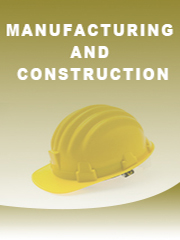Report overview
A rotary encoder, also called a shaft encoder, is an electro-mechanical device that converts the angular position or motion of a shaft or axle to an analog or digital code. There are two main types: absolute and incremental (relative). Absolute rotary encoders provide a distinctly coded numerical value for each shaft position. In positioning tasks in particular, the absolute encoders relieve the controller of computation tasks and keep costs down by eliminating the need for additional input components. Moreover, reference runs when the machine is switched on or after power failures are no longer required as the current position value is available immediately. Parallel absolute encoders transmit the position value to the analyzing electronics through several parallel cables. Serial absolute encoders transmit their output data via standardized interfaces and protocols.
This report aims to provide a comprehensive presentation of the global market for Absolute Rotary Encoders, with both quantitative and qualitative analysis, to help readers develop business/growth strategies, assess the market competitive situation, analyze their position in the current marketplace, and make informed business decisions regarding Absolute Rotary Encoders. This report contains market size and forecasts of Absolute Rotary Encoders in global, including the following market information:
Global Absolute Rotary Encoders Market Revenue, 2018-2023, 2024-2029, ($ millions)
Global Absolute Rotary Encoders Market Sales, 2018-2023, 2024-2029, (K Units)
Global top five Absolute Rotary Encoders companies in 2022 (%)
The global Absolute Rotary Encoders market was valued at US$ 1517.9 million in 2022 and is projected to reach US$ 2013 million by 2029, at a CAGR of 4.1% during the forecast period. The influence of COVID-19 and the Russia-Ukraine War were considered while estimating market sizes.
Global Absolute Rotary Encoders key players include Heidenhain, Tamagawa, Nemicon, P+F, Baumer, etc. Global top five manufacturers hold a share about 55%. Europe is the largest market, with a share about 45%, followed by North America, with a share about 25 percent. In terms of product, Single-Turn is the largest segment, with a share about 60%. And in terms of application, the largest application is Machine Tool, followed by Healthcare, Assembly Equipment, Consumer Electronics, etc.
We surveyed the Absolute Rotary Encoders manufacturers, suppliers, distributors and industry experts on this industry, involving the sales, revenue, demand, price change, product type, recent development and plan, industry trends, drivers, challenges, obstacles, and potential risks.
Total Market by Segment:
Global Absolute Rotary Encoders Market, by Type, 2018-2023, 2024-2029 ($ Millions) & (K Units)
Global Absolute Rotary Encoders Market Segment Percentages, by Type, 2022 (%)
Multi-Turn Encoders
Single-Turn Encoders
Global Absolute Rotary Encoders Market, by Application, 2018-2023, 2024-2029 ($ Millions) & (K Units)
Global Absolute Rotary Encoders Market Segment Percentages, by Application, 2022 (%)
Healthcare
Machine Tool
Consumer Electronics
Assembly Equipment
Others
Global Absolute Rotary Encoders Market, By Region and Country, 2018-2023, 2024-2029 ($ Millions) & (K Units)
Global Absolute Rotary Encoders Market Segment Percentages, By Region and Country, 2022 (%)
North America
US
Canada
Mexico
Europe
Germany
France
U.K.
Italy
Russia
Nordic Countries
Benelux
Rest of Europe
Asia
China
Japan
South Korea
Southeast Asia
India
Rest of Asia
South America
Brazil
Argentina
Rest of South America
Middle East & Africa
Turkey
Israel
Saudi Arabia
UAE
Rest of Middle East & Africa
Competitor Analysis
The report also provides analysis of leading market participants including:
Key companies Absolute Rotary Encoders revenues in global market, 2018-2023 (Estimated), ($ millions)
Key companies Absolute Rotary Encoders revenues share in global market, 2022 (%)
Key companies Absolute Rotary Encoders sales in global market, 2018-2023 (Estimated), (K Units)
Key companies Absolute Rotary Encoders sales share in global market, 2022 (%)
Further, the report presents profiles of competitors in the market, key players include:
Heidenhain
Tamagawa
Nemicon
P+F
TR Electronic
Baumer
Kuebler
Danaher
Omron
Koyo
Sensata(BEI)
Sick
Yuheng Optics
ELCO
Wuxi CREATE
Roundss
Sanfeng
Shanghai HOUDE
Outline of Major Chapters:
Chapter 1: Introduces the definition of Absolute Rotary Encoders, market overview.
Chapter 2: Global Absolute Rotary Encoders market size in revenue and volume.
Chapter 3: Detailed analysis of Absolute Rotary Encoders manufacturers competitive landscape, price, sales and revenue market share, latest development plan, merger, and acquisition information, etc.
Chapter 4: Provides the analysis of various market segments by type, covering the market size and development potential of each market segment, to help readers find the blue ocean market in different market segments.
Chapter 5: Provides the analysis of various market segments by application, covering the market size and development potential of each market segment, to help readers find the blue ocean market in different downstream markets.
Chapter 6: Sales of Absolute Rotary Encoders in regional level and country level. It provides a quantitative analysis of the market size and development potential of each region and its main countries and introduces the market development, future development prospects, market space of each country in the world.
Chapter 7: Provides profiles of key players, introducing the basic situation of the main companies in the market in detail, including product sales, revenue, price, gross margin, product introduction, recent development, etc.
Chapter 8: Global Absolute Rotary Encoders capacity by region & country.
Chapter 9: Introduces the market dynamics, latest developments of the market, the driving factors and restrictive factors of the market, the challenges and risks faced by manufacturers in the industry, and the analysis of relevant policies in the industry.
Chapter 10: Analysis of industrial chain, including the upstream and downstream of the industry.
Chapter 11: The main points and conclusions of the report.
